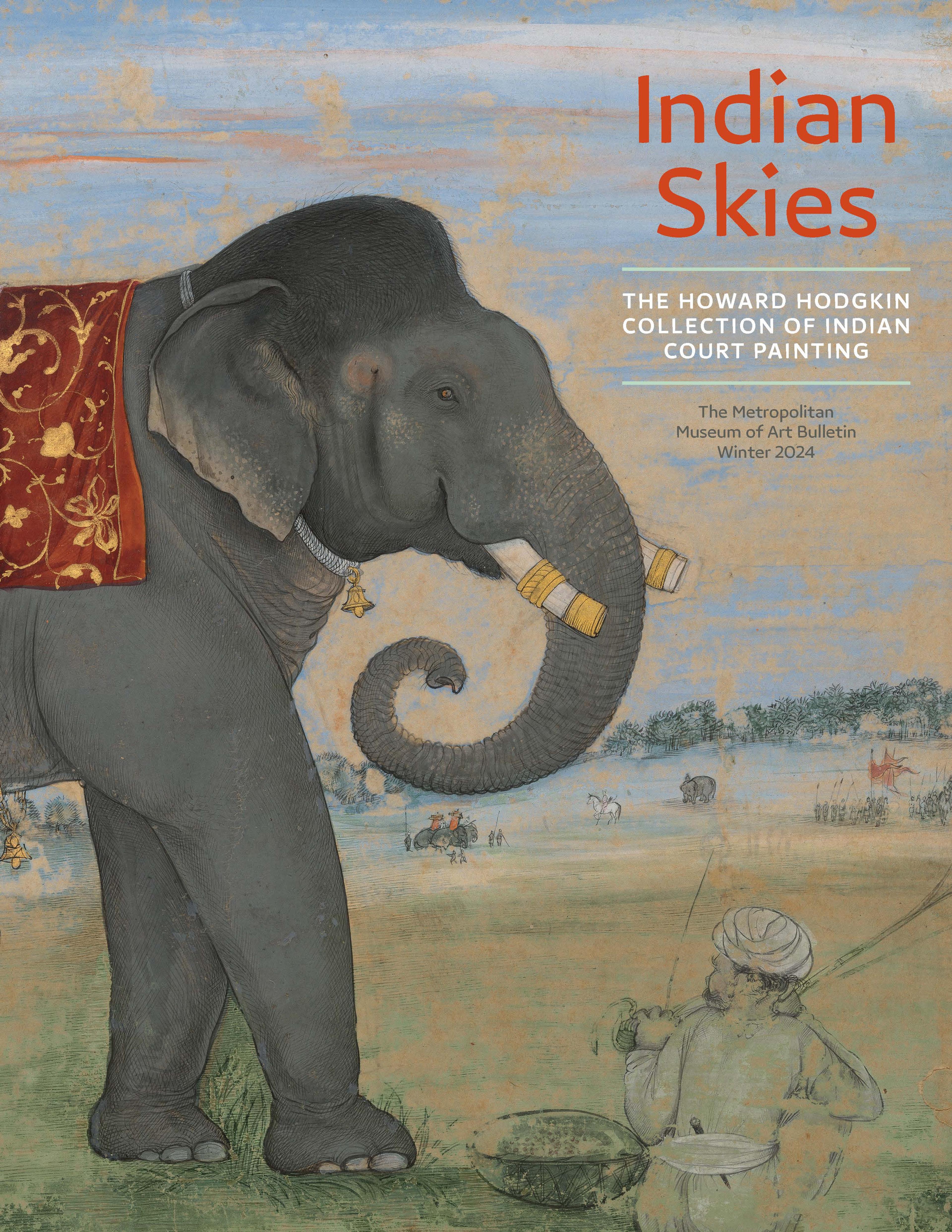Maharaja Dhiraj Singh Riding
The youthful Dhairaj Singh (1697–1726) sits on his beautiful piebald stallion. Both rider and rearing horse are shown in profile, their elegant contours silhouetted against a lime green ground. The maharaja wears a white tunic (jama) with green floral designs, a matching waist sash (patka), and an orange turban tied in the Central Indian manner. He displays two swords and a punch dagger (katar). His stallion wears a simple harness and trappings, a white plume, and a braided mane. Although young, Dhairaj Singh had a reputation for valor that extended well beyond his domain; he was received by the rulers of Mewar and Jaipur and entered into marriage alliances with both families. Slain in combat at twenty-nine while subduing a rebellious clan, he is named in the Devanagari inscription above the portrait. .
Artwork Details
- Title: Maharaja Dhiraj Singh Riding
- Date: ca. 1700
- Culture: Madhya Pradesh, Raghugarh
- Medium: Opaque watercolor and gold on paper
- Dimensions: Image: 22 1/16 × 13 3/4 in. (56 × 35 cm)
Framed: 27 3/8 × 19 1/4 × 3/4 in. (69.5 × 48.9 × 1.9 cm) - Classification: Paintings
- Credit Line: Howard Hodgkin Collection, Purchase, Gift of Florence and Herbert Irving, by exchange, 2022
- Object Number: 2022.239
- Rights and Reproduction: Image © Ashmolean Museum, University of Oxford
- Curatorial Department: Asian Art
More Artwork
Research Resources
The Met provides unparalleled resources for research and welcomes an international community of students and scholars. The Met's Open Access API is where creators and researchers can connect to the The Met collection. Open Access data and public domain images are available for unrestricted commercial and noncommercial use without permission or fee.
To request images under copyright and other restrictions, please use this Image Request form.
Feedback
We continue to research and examine historical and cultural context for objects in The Met collection. If you have comments or questions about this object record, please complete and submit this form. The Museum looks forward to receiving your comments.
